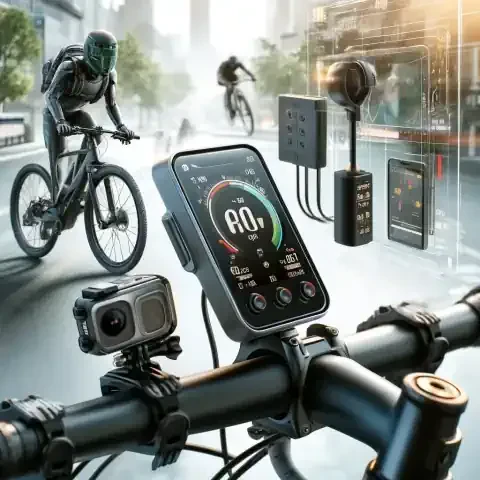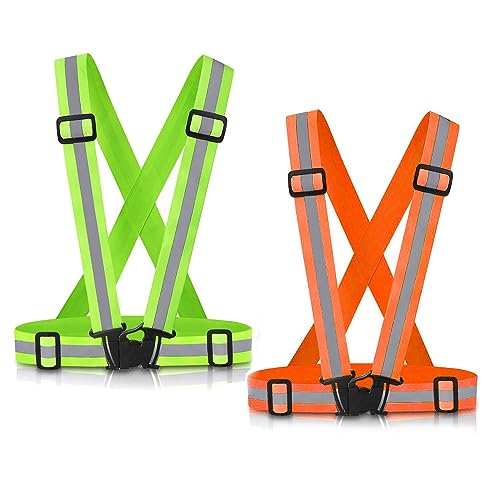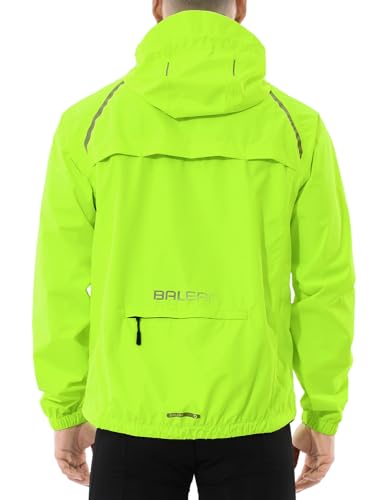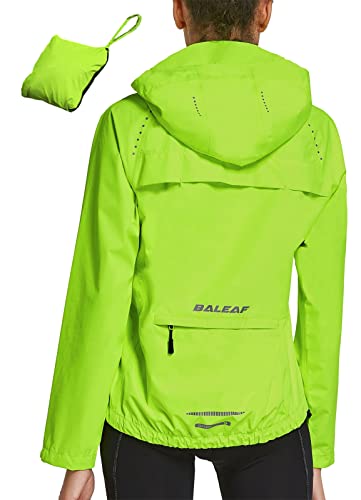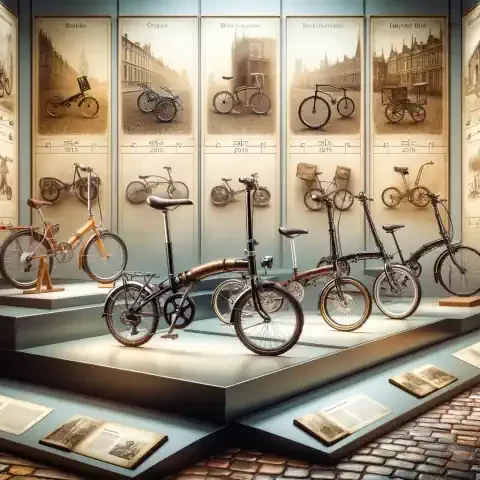The Importance Of Timing In Investing In New Bikes And Accessories
Timing is a critical factor when considering investments in new bikes and accessories. Understanding the nuances of when to make these purchases can significantly impact the quality of your cycling experience. This section delves into the importance of timing in such investments, examining market trends, seasonal variations, economic influences, and technological advancements.
Understanding Market Trends
A fundamental aspect of timing your investments is keeping a pulse on market trends within the cycling industry. By staying informed about emerging technologies, shifting consumer preferences, and the introduction of innovative products, cyclists can make strategic decisions about when to upgrade their gear. Whether it's the rise of electric bikes, advancements in aerodynamics, or trends in gravel riding, being aware of market dynamics empowers cyclists to make choices that align with their evolving needs and preferences.
Seasonal Considerations
Seasonal fluctuations play a significant role in determining the optimal time to invest in bikes and accessories. Different seasons bring about varying demand levels, sales cycles, and pricing trends. For example, the spring and summer months typically see an uptick in cycling activity, driving demand for new equipment. In contrast, the fall and winter seasons may present opportunities for cost savings as retailers offer discounts to clear out inventory. By leveraging these seasonal patterns, cyclists can make their purchases at times when they can obtain the best value for their money.
Economic Factors
Economic conditions can also influence the timing of investments in cycling gear. Factors such as inflation rates, consumer confidence, and disposable income levels can impact purchasing decisions. During periods of economic prosperity, cyclists may be more inclined to invest in high-end bikes and premium accessories. Conversely, economic downturns may prompt individuals to prioritize budget-friendly options or postpone discretionary spending. Understanding these economic factors enables cyclists to adapt their purchasing strategies to align with prevailing market conditions, ensuring that they make sound investment choices regardless of the economic climate.
Technological Advancements
The cycling industry is continually evolving, driven by advancements in technology and engineering. From lightweight materials to electronic shifting systems, new innovations can enhance performance, comfort, and safety on the bike. Staying abreast of these technological developments empowers cyclists to make informed decisions about when to upgrade their equipment. Whether it's adopting the latest drivetrain technology or investing in accessories with smart features, embracing innovation can enhance the overall riding experience and keep cyclists ahead of the curve.
By considering market trends, seasonal variations, economic influences, and technological advancements, cyclists can make well-timed investments in new bikes and accessories. Rather than making haphazard decisions, a strategic approach to timing ensures that cyclists can optimize their riding experience and derive maximum value from their investments in gear and equipment.
Assessing Your Needs And Budget
Before diving into the realm of new bikes and accessories, it's essential to conduct a thorough assessment of your riding needs and budgetary constraints. This section highlights the importance of understanding your requirements and financial limitations to make informed investment decisions in the world of cycling.
Determining Your Riding Goals
Begin by clarifying your riding goals and aspirations. Are you a competitive cyclist aiming for podium finishes, or do you prefer leisurely rides through scenic landscapes? Understanding your riding style, preferences, and long-term objectives will help you narrow down your options when considering new bikes and accessories. Whether it's conquering challenging terrain, commuting to work, or embarking on epic bikepacking adventures, aligning your gear choices with your riding goals ensures that you invest in equipment that enhances your overall cycling experience.
Evaluating Your Current Gear
Take stock of your existing gear and assess its condition, performance, and suitability for your needs. Are your components worn out and in need of replacement, or do they still have plenty of life left? Identifying any gaps or deficiencies in your current setup allows you to prioritize upgrades that will have the most significant impact on your riding experience. Additionally, consider whether any accessories or peripherals could complement your existing gear and address specific needs or preferences.
Setting A Realistic Budget
Establishing a realistic budget is essential when investing in new bikes and accessories. Consider your financial situation, including your disposable income, savings goals, and other financial obligations. Determine how much you're willing and able to allocate towards your cycling endeavors without compromising your overall financial well-being. While it's tempting to splurge on top-of-the-line equipment, being mindful of your budget ensures that you make purchases that are both affordable and sustainable in the long run.
Researching Potential Investments
Once you've identified your riding goals and budgetary constraints, conduct thorough research to explore your options for new bikes and accessories. Compare different brands, models, and specifications to find products that align with your needs and preferences. Read reviews, seek recommendations from fellow cyclists, and visit local bike shops to gain insights and firsthand experiences. By arming yourself with knowledge, you can make informed decisions that maximize the value and utility of your investments in cycling gear.
By assessing your needs, evaluating your current gear, setting a realistic budget, and conducting thorough research, you can navigate the process of investing in new bikes and accessories with confidence and clarity. Rather than making impulsive purchases or succumbing to marketing hype, a methodical approach ensures that you select equipment that enhances your riding experience and brings you closer to achieving your cycling goals.
Recognizing Signs That It's Time For An Upgrade
Knowing when to upgrade your biking equipment is crucial for maintaining optimal performance and safety on the road or trail. This section explores the indicators that signal it's time to invest in new bikes and accessories, ensuring that cyclists can make timely upgrades to enhance their riding experience.
Wear And Tear On Current Equipment
One of the most obvious signs that it's time for an upgrade is wear and tear on your current biking equipment. Components such as chains, cassettes, and brake pads undergo natural degradation over time, affecting performance and reliability. Pay attention to signs of excessive wear, including rust, corrosion, and noticeable decrease in functionality. Regular maintenance can prolong the lifespan of your gear, but when repairs become frequent or costly, it may be more cost-effective to invest in new equipment that offers improved durability and performance.
Changes In Riding Habits Or Preferences
As cyclists evolve and their riding habits or preferences change, their equipment needs may also evolve. For example, transitioning from casual recreational riding to competitive racing may necessitate upgrades to bikes with more aggressive geometry and advanced features. Similarly, changes in terrain or riding conditions may require specialized equipment tailored to specific disciplines or environments. By staying attuned to shifts in your riding habits or preferences, you can identify opportunities to upgrade your gear to better suit your evolving needs and aspirations.
Performance Limitations
If you find yourself struggling to keep up with your riding companions or feeling limited by your current equipment's performance, it may be time for an upgrade. Whether it's sluggish shifting, inadequate braking power, or discomfort during long rides, performance limitations can hinder your enjoyment and progress as a cyclist. Investing in bikes and accessories that offer superior performance and functionality can help you ride faster, longer, and more confidently, enabling you to achieve your cycling goals with greater ease and efficiency.
Safety Concerns
Safety should always be a top priority when it comes to biking equipment. If you encounter safety issues such as cracks in the frame, loose handlebars, or malfunctioning brakes, it's imperative to address these concerns promptly. Ignoring safety-related issues can lead to accidents or injuries, jeopardizing not only your well-being but also the safety of others sharing the road or trail. When safety concerns arise, investing in new bikes and accessories that meet stringent safety standards and feature advanced safety technologies can provide peace of mind and enhance your overall riding experience.
By recognizing signs of wear and tear, changes in riding habits or preferences, performance limitations, and safety concerns, cyclists can make informed decisions about when to invest in new bikes and accessories. Rather than waiting until equipment failure or accidents occur, proactive upgrades ensure that cyclists can enjoy a safe, comfortable, and rewarding riding experience that aligns with their evolving needs and aspirations.
Taking Advantage Of Sales And Promotions
Strategic timing can significantly impact the cost-effectiveness of investing in new bikes and accessories. This section explores the various opportunities for saving money by capitalizing on sales, promotions, and special offers, enabling cyclists to stretch their budgets further and obtain the equipment they desire at discounted prices.
Holiday Deals
Holidays often coincide with promotions and sales events, making them ideal times to purchase bikes and accessories at discounted prices. Major holidays such as Black Friday, Cyber Monday, and Christmas are typically accompanied by enticing deals and special offers from retailers and manufacturers. Whether it's a significant markdown on a high-end bike or bundled discounts on essential accessories, holiday deals present opportunities for substantial savings. By planning ahead and monitoring promotional calendars, cyclists can take advantage of these seasonal sales events to acquire premium gear at unbeatable prices.
End-Of-Season Sales
As each cycling season draws to a close, retailers often offer end-of-season sales to clear out remaining inventory and make room for new stock. These sales events typically coincide with the transition between seasons, such as the end of summer or winter. Savvy cyclists can capitalize on end-of-season sales to score deep discounts on bikes, apparel, and accessories that may have been out of reach at full price. Whether it's last year's models or discontinued products, end-of-season sales offer an excellent opportunity to upgrade your gear without breaking the bank.
Clearance Events
Clearance events are another avenue for finding great deals on bikes and accessories. Retailers may host clearance sales to liquidate excess inventory, discontinued products, or showroom models. Clearance events often feature steep discounts and rock-bottom prices, making them a prime opportunity for budget-conscious cyclists to snag bargains on high-quality gear. While selection may be limited, diligent shoppers can uncover hidden gems and score significant savings on items that meet their needs and preferences.
Manufacturer Rebates
Manufacturer rebates provide another avenue for saving money on new bikes and accessories. Manufacturers may offer rebates or cashback incentives as part of promotional campaigns to stimulate sales and incentivize purchases. These rebates can take various forms, such as instant discounts at the point of sale or mail-in rebates redeemable after purchase. By taking advantage of manufacturer rebates, cyclists can effectively lower the cost of their investments and enjoy enhanced value for their money. Additionally, combining rebates with other promotions or discounts can amplify savings and maximize the affordability of new biking equipment.
By leveraging holiday deals, end-of-season sales, clearance events, and manufacturer rebates, cyclists can maximize their purchasing power and acquire new bikes and accessories at unbeatable prices. Rather than paying full retail price, strategic shopping allows cyclists to stretch their budgets further and invest in premium gear without compromising on quality or performance. With careful planning and patience, cyclists can capitalize on sales and promotions to enhance their riding experience while saving money in the process.
Weighing The Benefits Of New Vs. Used Equipment
Choosing between new and used equipment is a crucial decision that every cyclist must make when considering upgrades. This section examines the advantages and considerations associated with both options, empowering cyclists to make informed choices that align with their preferences, budget, and performance requirements.
Cost Savings Of Buying Used
One of the primary attractions of purchasing used equipment is the potential for significant cost savings. Used bikes and accessories are typically available at a fraction of the cost of their new counterparts, making them an attractive option for budget-conscious cyclists. Whether you're a beginner looking to enter the sport without breaking the bank or a seasoned rider seeking to upgrade your gear affordably, buying used allows you to stretch your budget further and obtain higher-end equipment that may have been out of reach at full price.
Assurance Of Quality With New Purchases
While buying used can offer cost savings, opting for new equipment provides assurance of quality and reliability. New bikes and accessories come with manufacturer warranties, ensuring protection against defects and malfunctions. Additionally, new purchases offer peace of mind knowing that your equipment has not been subjected to the wear and tear of previous use. Whether it's the latest technology, updated designs, or pristine condition, investing in new equipment guarantees that you're getting products that meet the highest standards of performance, safety, and durability.
Warranty Coverage And Support
One of the significant advantages of purchasing new equipment is the warranty coverage and customer support provided by manufacturers and retailers. Warranties offer protection against manufacturing defects and mechanical failures, providing peace of mind and financial security. In the event of any issues or concerns, manufacturers typically offer responsive customer support and repair services to address problems promptly. While used equipment may offer initial cost savings, it may lack the warranty coverage and support available with new purchases, leaving cyclists vulnerable to unforeseen expenses and challenges down the road.
Environmental Considerations
Environmental considerations are increasingly influencing purchasing decisions in the cycling community. Opting for used equipment promotes sustainability by extending the lifespan of existing products and reducing waste. By giving pre-owned bikes and accessories a second life, cyclists can minimize their environmental footprint and contribute to the circular economy. Additionally, choosing used equipment reduces the demand for new manufacturing, conserves resources, and mitigates the environmental impact associated with production and transportation. For eco-conscious cyclists, buying used presents an opportunity to align their purchasing habits with their environmental values and promote sustainability within the cycling industry.
By weighing the benefits of new versus used equipment, cyclists can make informed decisions that align with their priorities, budget, and environmental values. Whether you prioritize cost savings, quality assurance, warranty coverage, or environmental sustainability, understanding the considerations associated with each option enables you to select equipment that best suits your needs and preferences. Whether you choose new or used, investing in high-quality gear ensures that you can enjoy a safe, comfortable, and rewarding riding experience for years to come.
Considering The Long-Term Value Of Investments
When investing in bikes and accessories, it's essential to consider the long-term value that these purchases offer. This section explores the factors that contribute to the longevity and resale potential of cycling equipment, enabling cyclists to make strategic investments that deliver lasting value and return on investment.
Durability And Longevity Of Products
Durability and longevity are key considerations when evaluating the long-term value of biking equipment. High-quality bikes and accessories are built to withstand the rigors of regular use and maintain performance over extended periods. Factors such as materials, construction techniques, and build quality contribute to the durability of products. By investing in durable equipment, cyclists can minimize the need for frequent repairs or replacements, thereby reducing long-term ownership costs and maximizing the value derived from their investments.
Potential Resale Value
Another aspect of assessing long-term value is considering the potential resale value of bikes and accessories. Well-maintained and sought-after products often retain their value better over time, making them more attractive to prospective buyers in the secondary market. Factors such as brand reputation, model popularity, and market demand influence resale value. By choosing products with strong resale potential, cyclists can recoup a significant portion of their initial investment when it comes time to upgrade or sell their equipment, effectively reducing the overall cost of ownership.
Compatibility With Future Upgrades
Investing in equipment that is compatible with future upgrades enhances the long-term value of your purchases. Bikes and accessories that allow for component upgrades or customization offer flexibility and adaptability to evolving preferences and technologies. For example, frames with modular designs or components with interchangeable parts facilitate easy upgrades and modifications, extending the lifespan and utility of your equipment. By choosing products with forward compatibility, cyclists can future-proof their investments and ensure that their gear remains relevant and functional as their needs change over time.
Return On Investment
Ultimately, assessing the long-term value of investments in bikes and accessories involves considering the overall return on investment (ROI). ROI takes into account factors such as initial cost, durability, resale value, and satisfaction derived from using the equipment. By evaluating these factors holistically, cyclists can make informed decisions that optimize the value proposition of their purchases. Whether it's maximizing performance, minimizing ownership costs, or enhancing resale potential, prioritizing ROI ensures that cyclists derive maximum value and satisfaction from their investments in biking equipment.
By considering the durability and longevity of products, potential resale value, compatibility with future upgrades, and overall return on investment, cyclists can make strategic investments that deliver long-term value and satisfaction. Rather than focusing solely on upfront costs or immediate gratification, a forward-thinking approach to purchasing enables cyclists to enjoy a rewarding and sustainable riding experience that extends well into the future. Whether you're a recreational rider or a competitive cyclist, prioritizing long-term value ensures that your investments in biking equipment pay dividends for years to come.
Seeking Expert Advice And Recommendations
Navigating the vast array of options available in the world of biking equipment can be daunting. This section emphasizes the importance of seeking expert advice and recommendations to make informed decisions when investing in new bikes and accessories, ensuring that cyclists can benefit from the knowledge and experience of industry professionals and fellow enthusiasts.
Consulting Local Bike Shops
Local bike shops (LBS) are invaluable resources for cyclists seeking expert advice and guidance. Staffed by knowledgeable professionals with a passion for cycling, LBS provide personalized recommendations tailored to individual needs and preferences. Whether you're a beginner looking for your first bike or an experienced rider seeking specialized gear, LBS staff can offer insights, answer questions, and provide hands-on assistance to help you make informed purchasing decisions. Additionally, LBS often offer services such as bike fitting, maintenance, and repairs, further enhancing the value they provide to cyclists.
Reading Reviews And Testimonials
Online reviews and testimonials are valuable sources of information for cyclists researching bikes and accessories. Websites, forums, and social media platforms host a wealth of user-generated content, including product reviews, ratings, and firsthand experiences. Reading reviews allows cyclists to gain insights into the performance, durability, and overall satisfaction of specific products from real-world users. Additionally, professional reviews from cycling publications and websites offer expert analysis and recommendations based on comprehensive testing and evaluation. By leveraging both user and expert reviews, cyclists can make well-informed decisions that align with their needs and preferences.
Seeking Input From Experienced Riders
Experienced riders within your cycling community can offer invaluable advice and recommendations based on their firsthand experiences. Whether it's fellow club members, training partners, or cycling mentors, seeking input from experienced riders allows you to tap into a wealth of knowledge and expertise. Experienced riders can provide insights on equipment choices, riding techniques, and training strategies, helping you navigate the complexities of the sport more effectively. By fostering connections within the cycling community, you can benefit from the collective wisdom and camaraderie that defines the cycling experience.
Joining Online Communities And Forums
Online communities and forums provide platforms for cyclists to connect, share insights, and exchange information about bikes and accessories. Websites such as cycling-specific forums, social media groups, and online marketplaces facilitate discussions on a wide range of topics, from gear recommendations to maintenance tips. By joining online communities, cyclists can engage with like-minded individuals, ask questions, and access a wealth of collective knowledge. Additionally, online forums offer opportunities to buy, sell, or trade cycling equipment, providing a convenient platform for sourcing gear and accessories.
By consulting local bike shops, reading reviews and testimonials, seeking input from experienced riders, and joining online communities and forums, cyclists can access a wealth of expert advice and recommendations to inform their purchasing decisions. Rather than relying solely on personal preferences or marketing hype, tapping into the knowledge and experiences of others ensures that cyclists make informed choices that align with their needs, preferences, and riding goals. Whether you're a novice rider or a seasoned enthusiast, seeking expert advice enhances the overall cycling experience and fosters a sense of community within the sport.
Planning For Upcoming Events And Riding Seasons
Effective planning is essential for maximizing the enjoyment and success of cycling events and riding seasons. This section emphasizes the importance of strategic preparation and foresight in anticipating upcoming events, seasonal changes, and riding opportunities, enabling cyclists to optimize their training, equipment, and experiences.
Preparing For Competitions And Races
For competitive cyclists, planning for upcoming events involves meticulous preparation and training. Whether it's a local criterium, a regional stage race, or a national championship, competitors must tailor their training and equipment to meet the demands of specific events. Planning ahead allows cyclists to establish training schedules, set performance goals, and fine-tune their equipment for optimal performance on race day. Additionally, strategic planning enables competitors to anticipate logistical considerations such as travel arrangements, accommodation, and race-day logistics, ensuring a smooth and successful experience.
Seasonal Changes In Riding Conditions
As the seasons change, so do the riding conditions, presenting unique challenges and opportunities for cyclists. Whether it's navigating icy roads in winter, enduring sweltering heat in summer, or reveling in the vibrant colors of autumn, each season offers distinct experiences for riders. Planning for seasonal changes involves adapting your gear and riding habits to suit prevailing conditions. This may include investing in cold-weather clothing, equipping your bike with appropriate tires, or adjusting your training regimen to accommodate changes in daylight hours and weather patterns. By anticipating seasonal changes, cyclists can continue to enjoy riding year-round while staying safe and comfortable in diverse conditions.
Group Rides And Tours
Group rides and tours provide opportunities for cyclists to connect with others, explore new routes, and share memorable experiences on the bike. Planning for group rides involves coordinating schedules, selecting routes, and ensuring that participants are adequately prepared for the journey ahead. Whether it's a leisurely weekend ride with friends or an epic multi-day tour through scenic landscapes, effective planning enhances the enjoyment and camaraderie of group cycling adventures. Additionally, planning for group rides allows cyclists to tailor the experience to accommodate varying skill levels, preferences, and objectives, ensuring that everyone can participate and have a rewarding experience.
Personal Milestones And Challenges
Setting personal milestones and challenges is an integral part of the cycling journey, motivating riders to push their limits, achieve their goals, and celebrate their achievements. Whether it's completing a century ride, conquering a challenging climb, or participating in a charity event, personal milestones provide a sense of accomplishment and fulfillment for cyclists. Planning for these milestones involves setting specific goals, developing training plans, and equipping yourself with the necessary gear and support to succeed. By establishing clear objectives and planning for personal challenges, cyclists can stay focused, motivated, and inspired to reach new heights in their cycling endeavors.
By planning for upcoming events, seasonal changes, group rides, and personal milestones, cyclists can optimize their training, equipment, and experiences for maximum enjoyment and success. Effective planning involves anticipating challenges, setting goals, and making strategic decisions to ensure that you're prepared for whatever the road ahead may bring. Whether you're a competitive racer, a recreational rider, or an adventurous tourer, thoughtful planning enhances the quality and fulfillment of your cycling journey, enabling you to make the most of every ride.
Making Informed Decisions For Optimal Cycling Experiences
The culmination of strategic planning, research, and thoughtful consideration is the ability to make informed decisions that enhance the overall cycling experience. This section underscores the importance of applying the knowledge and insights gained from previous sections to make choices that align with individual preferences, goals, and values, ensuring that cyclists derive maximum satisfaction and enjoyment from their endeavors.
Emphasizing The Importance Of Timing
Throughout this guide, the significance of timing in investing in new bikes and accessories has been consistently highlighted. From understanding market trends to leveraging sales and promotions, timing plays a crucial role in obtaining the best value for your money. By being mindful of seasonal variations, economic factors, and technological advancements, cyclists can make strategic decisions that optimize their purchasing power and enhance their riding experience.
Prioritizing Your Needs And Budget
Understanding your riding goals, evaluating your current gear, and setting a realistic budget are fundamental steps in making informed purchasing decisions. By prioritizing your needs and budget constraints, you can avoid overspending on unnecessary features or equipment that doesn't align with your objectives. Whether you're a recreational rider seeking affordability or a competitive cyclist prioritizing performance, staying true to your needs and budget ensures that you make choices that maximize value and satisfaction.
Recognizing When Upgrades Are Necessary
Recognizing signs that it's time for an upgrade is essential for maintaining optimal performance, safety, and enjoyment on the bike. Whether it's wear and tear on current equipment, changes in riding habits, performance limitations, or safety concerns, being proactive about upgrades ensures that you're always riding with confidence and comfort. By staying attuned to these indicators, cyclists can address issues promptly and invest in new bikes and accessories that meet their evolving needs and preferences.
Maximizing Value Through Strategic Planning And Research
Strategic planning and research are key ingredients in making informed decisions that deliver maximum value and satisfaction. Whether it's seeking expert advice, monitoring market trends, or planning for upcoming events, diligent preparation empowers cyclists to navigate the complexities of the cycling landscape with confidence and precision. By leveraging knowledge, insights, and resources, cyclists can make strategic investments that optimize their riding experience and bring them closer to achieving their cycling goals.
In conclusion, making informed decisions for optimal cycling experiences requires a combination of timing, prioritization, awareness, and planning. By emphasizing the importance of timing, prioritizing needs and budget, recognizing when upgrades are necessary, and maximizing value through strategic planning and research, cyclists can embark on a journey filled with enjoyment, fulfillment, and success. Whether you're a casual rider, a seasoned enthusiast, or a competitive racer, applying these principles ensures that you derive maximum satisfaction and enjoyment from every pedal stroke, mile, and adventure on the bike.
